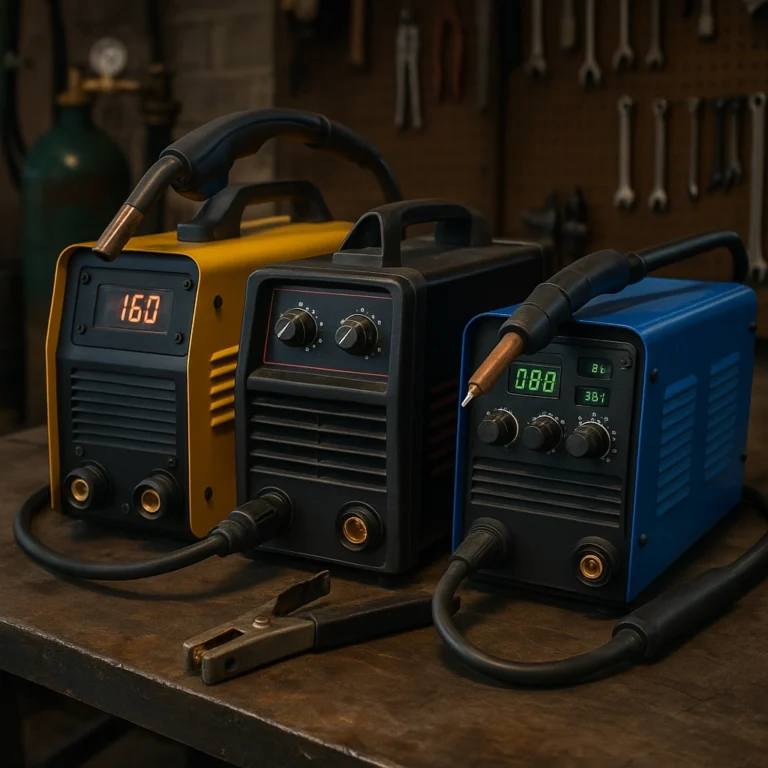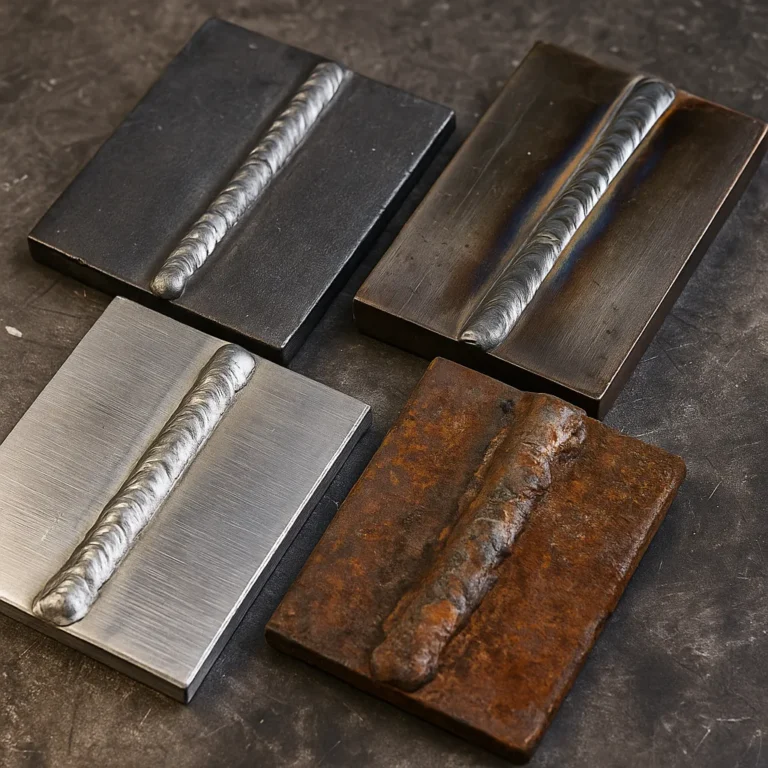Does Welding Weaken Metal? A Clear, Welder-Friendly Explanation

Disclosure: This post contains affiliate links. As an Amazon Associate, I earn from qualifying purchases—at no extra cost to you.
Last Updated: November 2025
Welders hear this question all the time: does welding actually weaken metal? The honest answer is yes, it can, but only when heat, prep, or technique are off. A clean, well-controlled weld can be just as strong—or stronger—than the surrounding metal. It all comes down to how heat affects the metal’s grain structure and how well the joint is prepared before you strike an arc.
Understanding what happens inside the heat-affected zone (HAZ) is the key to knowing when a weld keeps its strength and when things start to fall apart.
👉 Before diving deeper into how heat affects the metal, take a quick look at our guide on understanding welding machine choices to get a clearer sense of which setup supports stronger, more consistent welds.
🔍 What Happens to Metal When You Weld It
Welding heats and melts the metal, creating three zones: the weld metal, the HAZ, and the untouched base metal. The HAZ is where strength can change the most. Too much heat or slow travel can shift the grain structure and weaken the metal right beside the weld.
That’s why most failures occur next to the weld—not in the weld itself.
🔍 When Welding Can Weaken Metal
Metal gets weaker when heat or technique is out of balance. Running too hot, welding over rust or paint, choosing the wrong filler, or moving too slowly can all affect the HAZ.
These issues often lead to undercut, poor penetration, brittle grain structure, or stressed joints—common reasons welds don’t hold up.
🔍 When Welding Strengthens Metal
A well-made weld doesn’t weaken metal at all. When heat, prep, and filler selection are right, the joint can match or exceed the strength of the base material. In many bend or pull tests, the break happens beside the weld—not in it—which is the sign of a solid weld.
Penetration, clean prep, and steady technique are the real difference-makers.
🔍 How Different Metals React to Welding Heat
Each metal responds differently, so the risk of weakening varies:
Mild steel is forgiving and stays strong unless badly overheated.
Stainless steel can lose corrosion resistance when overheated.
Aluminum reacts quickly to heat and weakens easily in the HAZ.
Chromoly may require controlled cooling or post-weld heat treatment.
Titanium demands perfect shielding to avoid brittleness.
Understanding these differences helps you adjust your approach for each metal.
👉 Before choosing a welder for different metals, check our breakdown on matching your machine to your metal to get a clearer idea of what works best.
🔍 How to Prevent Weak Welds
Keeping metal strong largely comes down to heat control and prep. Clean metal, proper amperage, steady travel speed, and matching filler metal all reduce the chance of weakening the HAZ.
Good joint design and avoiding excessive heat buildup on thin sections also make a big impact.
🔍 Signs That Welding May Have Weakened the Metal
A few clues can indicate the metal took too much heat:
- Cracking or brittleness near the weld
- Heavy heat tint or discoloration
- Undercut or washed-out edges
- Lack of penetration
- Distortion or warping
- Contamination inside the bead
These signs usually point to overheating or poor prep.
📌 Key Takeaways
- Welding doesn’t automatically weaken metal—excessive heat or bad prep does.
- Most weld failures happen in the HAZ, not the weld itself.
- Clean prep and steady heat control keep joints strong.
- Metals react differently to welding heat, so technique matters.
- A properly made weld can match or exceed the strength of the base metal.
🟢 FAQs About Welding and Metal Strength
Does welding always weaken metal?
No. With proper technique and heat control, a weld is usually as strong as the metal around it.
Why do welds crack?
Most cracks happen in the HAZ because of overheating, undercut, or lack of fusion.
Is TIG or MIG stronger?
Both can be strong when done correctly. TIG offers precision; MIG excels at strong structural joints.
✅ Conclusion
Welding only weakens metal when heat or technique isn’t managed well. With the right prep, correct filler metal, and steady heat control, a weld can be every bit as strong as the base material. Once you understand the HAZ and how metals react to heat, making reliable, durable welds becomes much easier.






